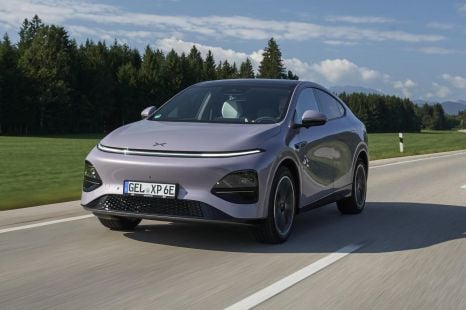

Neil Briscoe
2026 Xpeng G6 AWD Performance review: Quick drive
4 Days Ago
The Polestar 2 has recently been updated in Australia, with new design touches headlining the changes. There's more to come, though.
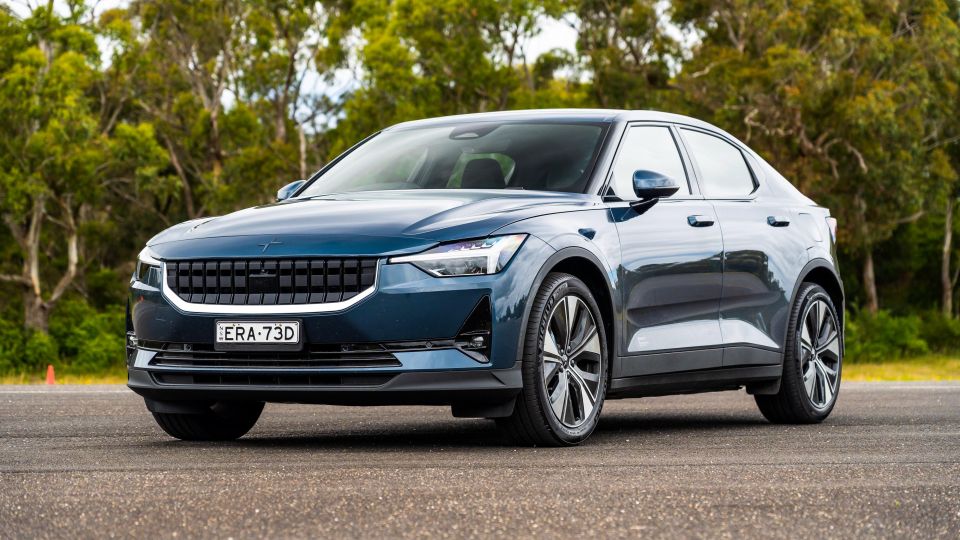
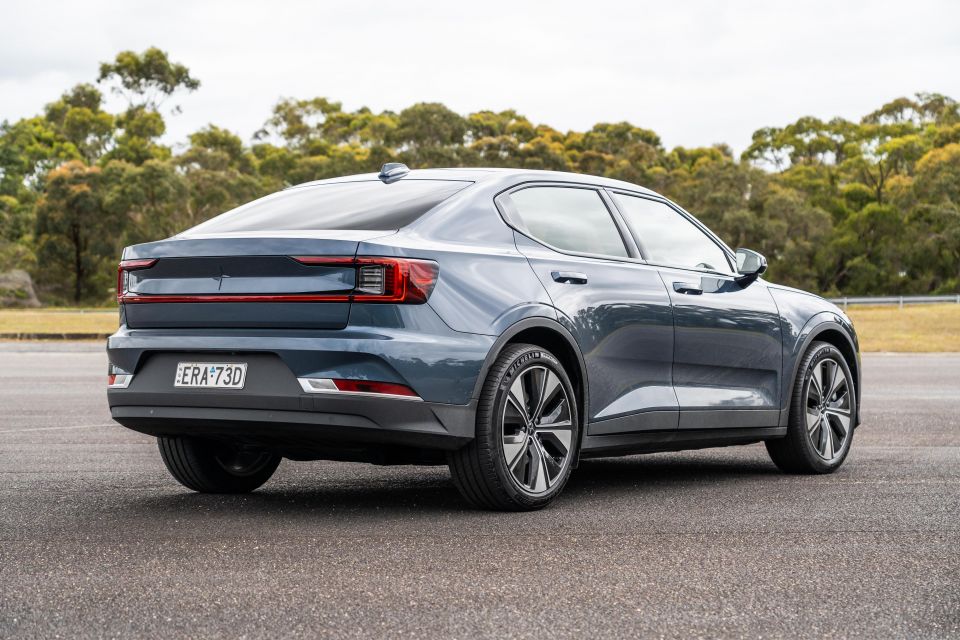

Quickly see how this car stacks up against its competition. Select any benchmark to see more details.
Where expert car reviews meet expert car buying – CarExpert gives you trusted advice, personalised service and real savings on your next new car.
Polestar is young in Australia, but it’s making an impact.

With more than 1500 sales in 2022 it’s already bigger than Jaguar or Genesis, and that’s with just one model in its range. That model is the Polestar 2, a high-riding electric sedan aimed squarely at the market-leading Tesla Model 3.
Under the skin, the Polestar 2 shares its CMA platform with the Volvo XC40 Recharge Pure Electric.
Since arriving in Australia it’s been updated to feature new wheels and a new colour palette, and will again be tweaked later in 2023 with a new nose, longer standard equipment list, and rear-wheel drive.
Should you hop on the Polestar bandwagon now, or hold fire until the car is updated again later this year?
The 2023 Polestar 2 kicks off at $63,900 before on-roads, although the Long Range model on test here starts at $68,400 before on-roads due to its bigger battery pack.
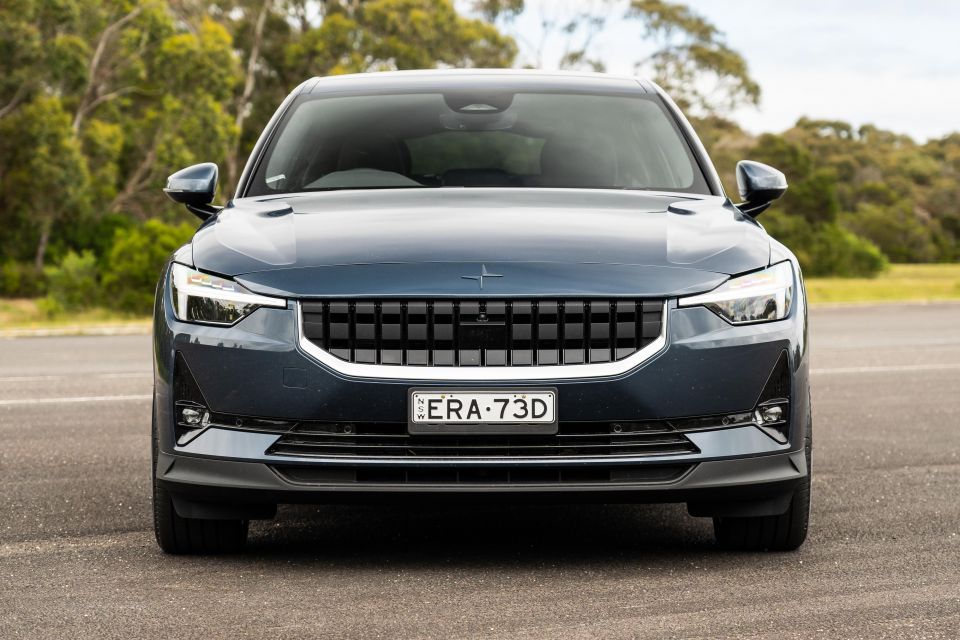
It’s worth bearing in mind, to have a fully-equipped car you’ll need to add at least the Pilot Lite Pack ($3400) to gain a full suite of active driver assists.
Our tester was also fitted with the Plus Pack ($6000), for a sticker price of $77,800 before on-road costs and incentives. That puts it directly into line with the Tesla Model 3 Long Range ($76,900).
There aren’t many other electric sedans out there, but price-wise the PS2 also aligns with the Hyundai Ioniq 5 Techniq ($79,500) and Kia EV6 GT-Line RWD ($79,590).
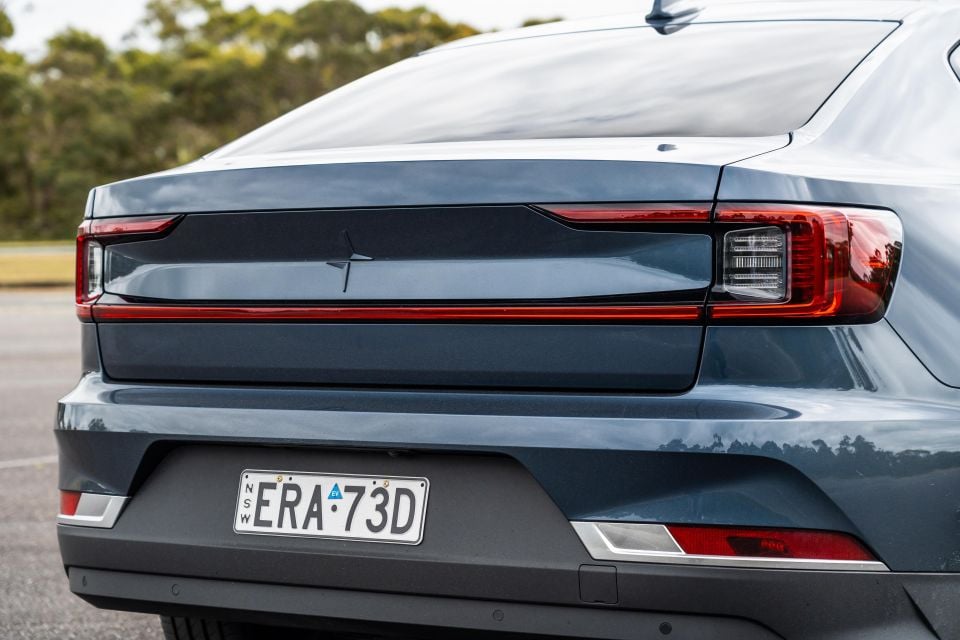
2023 Polestar 2 pricing:
All prices exclude on-road costs
Buy your new car without the stress. It's fast, simple and completely free.

Great service from Travis and team, second time I have used this business would not hesitate to recommend them to anyone
Craig C.
Purchased a Ford Ranger in Sunshine Coast, QLD
CarExpert helped Craig save $7,224 on his Ford Ranger, now let us save you on your next new car.
Get your BEST priceThe Polestar 2 looks and feels very modern behind the wheel, but functionality hasn’t fallen by the wayside in search of that aesthetic.
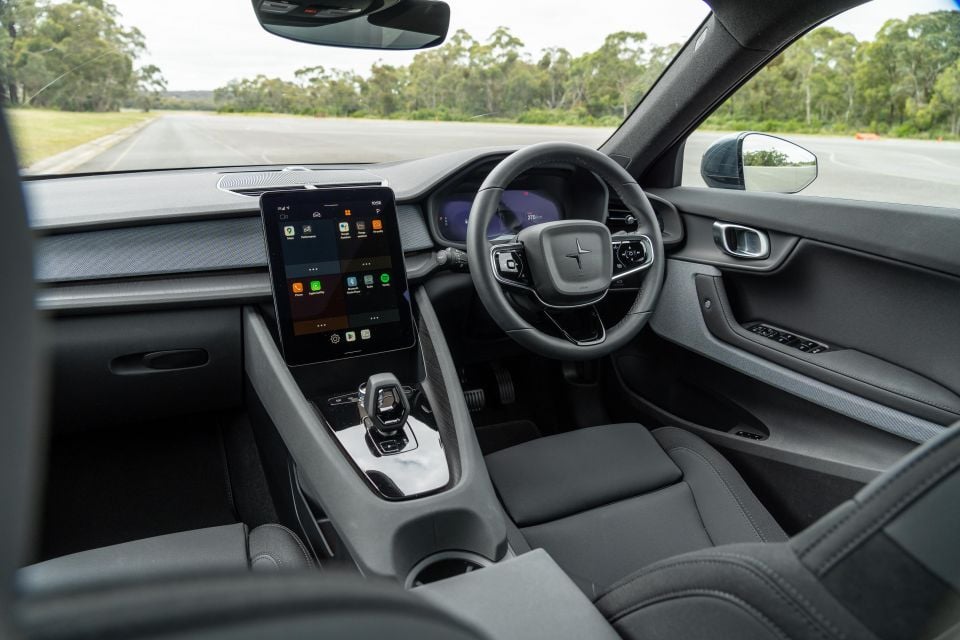
There are some interesting materials and design touches that give the Polestar 2 a character of its own behind the wheel. It’s still part of the same family tree, but it’s not a carbon copy of the Volvo XC40 or C40 behind the wheel.
Like on the outside, it feels like a focus has been placed on making the 2 feel almost like a muscle car, with a rising central tunnel, low seating position, and pinched glasshouse. It wraps around you in a way the light, open Tesla Model 3 doesn’t.
The seats are excellent. They’re pretty to look at, and offer more padding and support than their slim shape would suggest.
Headroom is solid up front despite the panoramic glass roof, and the low driving position hasn’t come at the cost of forward visibility. Little drivers won’t have trouble seeing the front corners of the car, although the sloping roofline and pinched glasshouse means there’s a pretty hefty over-the-shoulder blind spot.
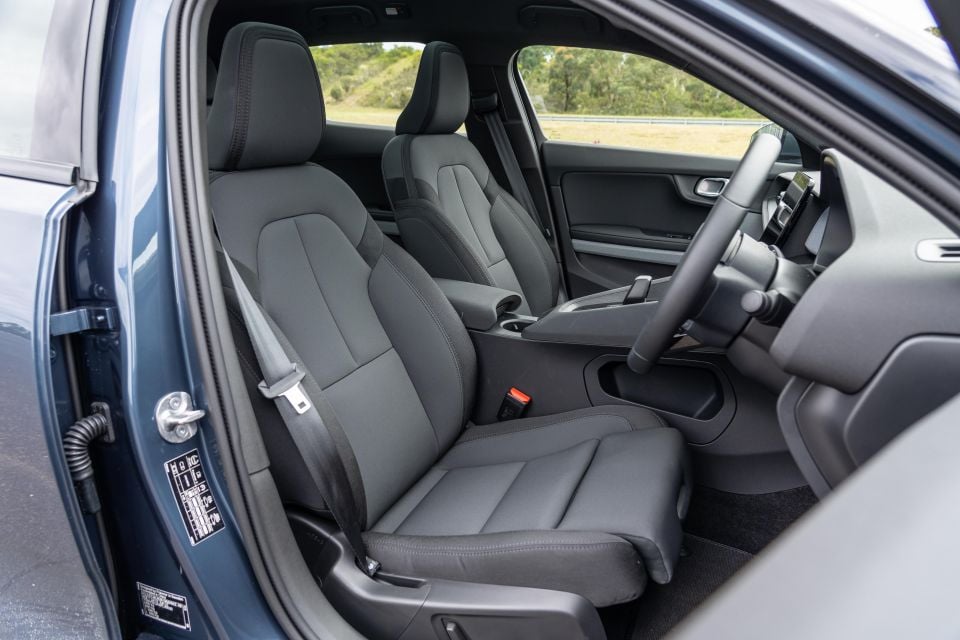
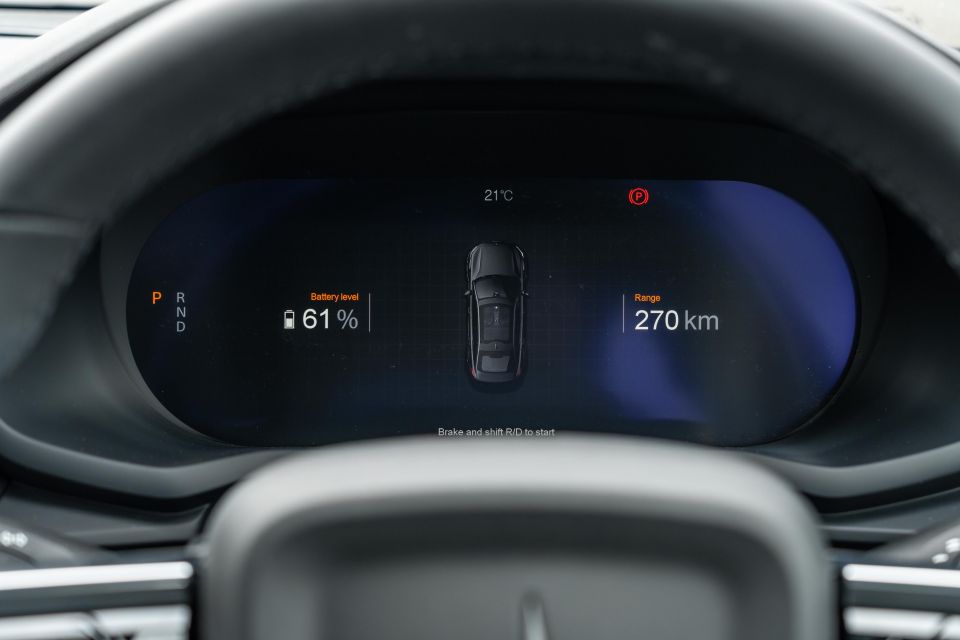
At the centre of the cabin is an 11.2-inch touchscreen running Android Automotive software from Google.
Unlike Android Auto, which is driven by a connected phone and runs over the top of a carmaker’s in-house software, this system is Google from the ground up, right down to the voice assistant.
It’s a big step forward from the pretty (but clunky) Sensus system that’s featured in Volvo products since the current XC90 launched in 2014, and doesn’t leave you wishing for old-fashioned buttons like some touch-only setups.
The graphics are modern, the menus are easy to navigate, and responses to inputs are every bit as quick as you’d hope in the iPad era. Hey Google voice inputs are more useful than Hey BMW or Hey Mercedes, given the car is connected to the world’s biggest search engine.
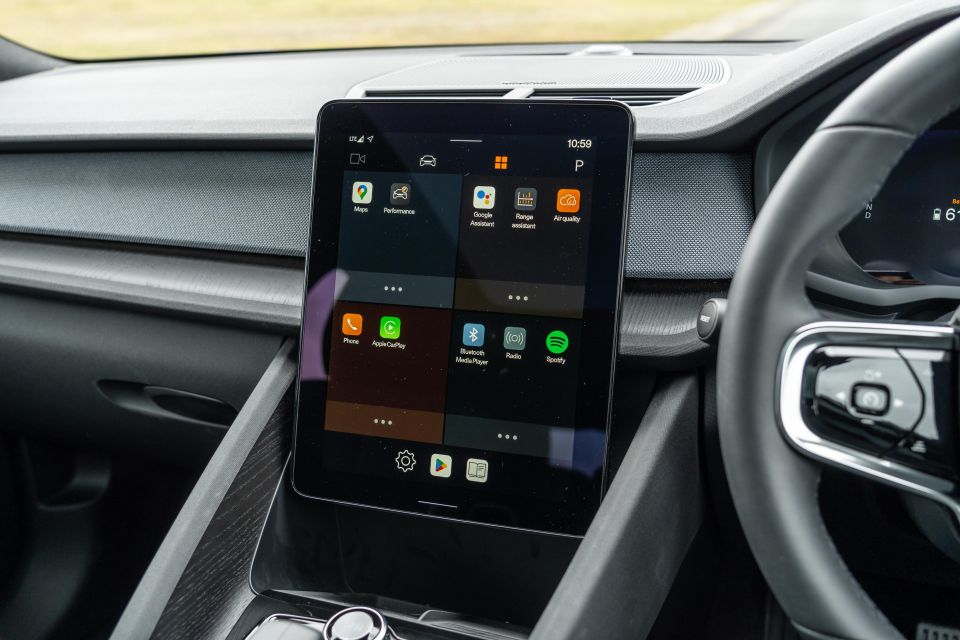
Google Maps are still the industry best, and having Spotify built natively into the car is great. Also great is over-the-air update capability, which should keep the system fresh (and can even unlock more power) as driver demands evolve.
The driver is faced with a simple, clean display that shows speed, range, power, and mapping. You aren’t bombarded with battery readouts and range predictions, which makes it easier to drive rather than worrying about your battery – especially in the Long Range on test here, with its 540km claim.
There are a few oversights up front. For one, storage is frustratingly limited. There’s a small bin under the armrest, but it’s not big enough for sunglasses or snacks, and the rising transmission tunnel doesn’t have space for bags beneath it.
One benefit of going electric is the freedom afforded to interior designers by flat-floored platforms, but the 2 is built on a converted internal-combustion chassis. As a result, it feels a bit compromised.
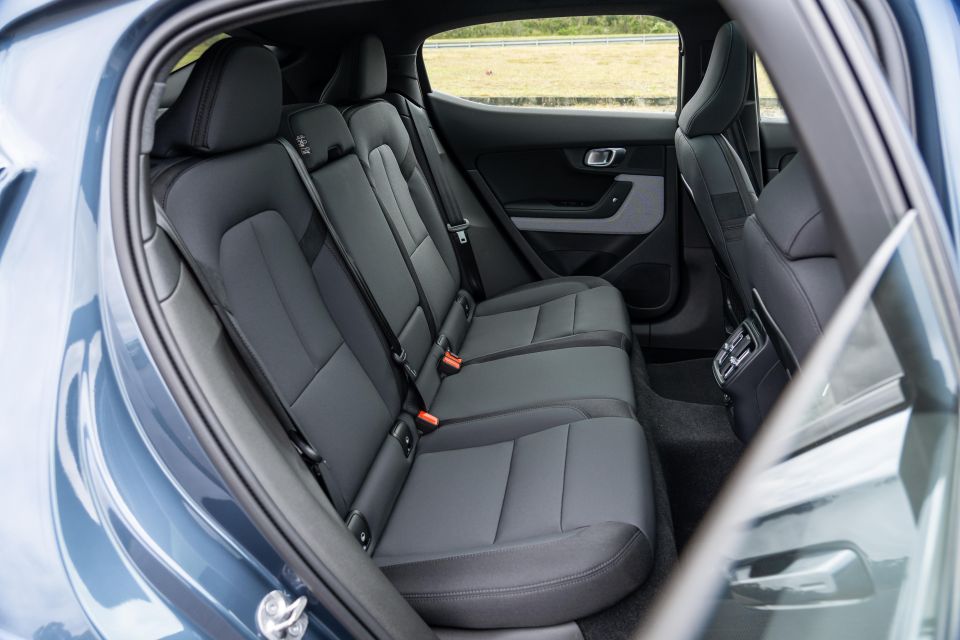
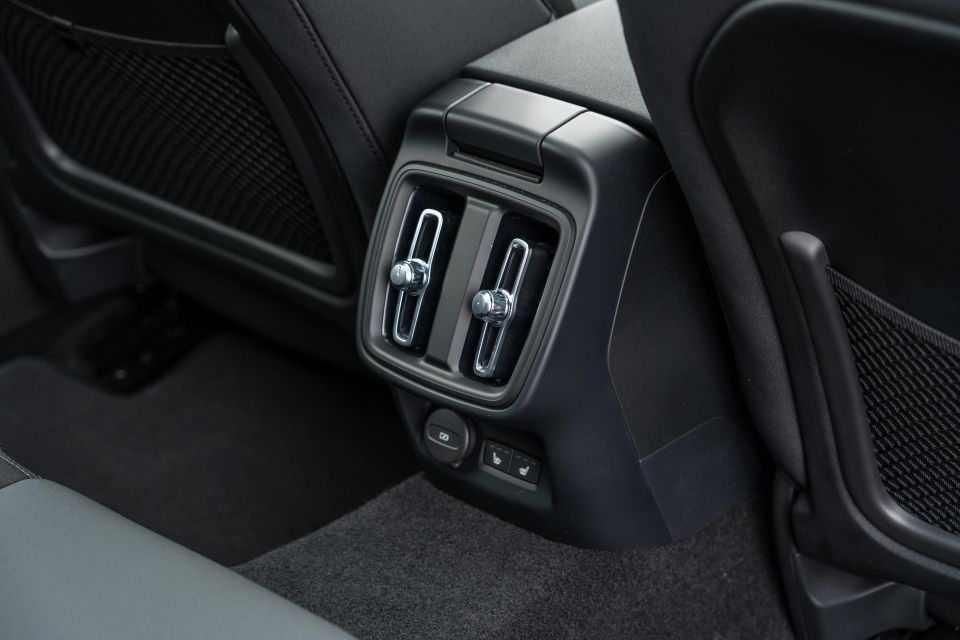
At launch, the Polestar 2 didn’t feature Apple CarPlay. A recent software update added the functionality, although it’s wired instead of wireless. I found myself using CarPlay despite how good the native system is because of how easy it is to send messages on the move.
It’s a mixed bag in the second row. Rear legroom is accomodating enough for average-sized adults, but it’s a bit tight back there behind taller drivers. Headroom is better than expected given the panoramic glass roof and there’s space for kids or tall-ish teenagers, but adults will feel a bit cramped.
The middle seat is a total write-off, with a narrow cushion and no foot room thanks to the internal-combustion legacy hump on the floor.
With a slim windowline and sharply-raked roofline, it feels a bit dark and claustrophobic back there, and the rear door opening is pretty tight. On the plus side, there are air vents and two USB-C ports back there. You also get heating with the Plus Pack.
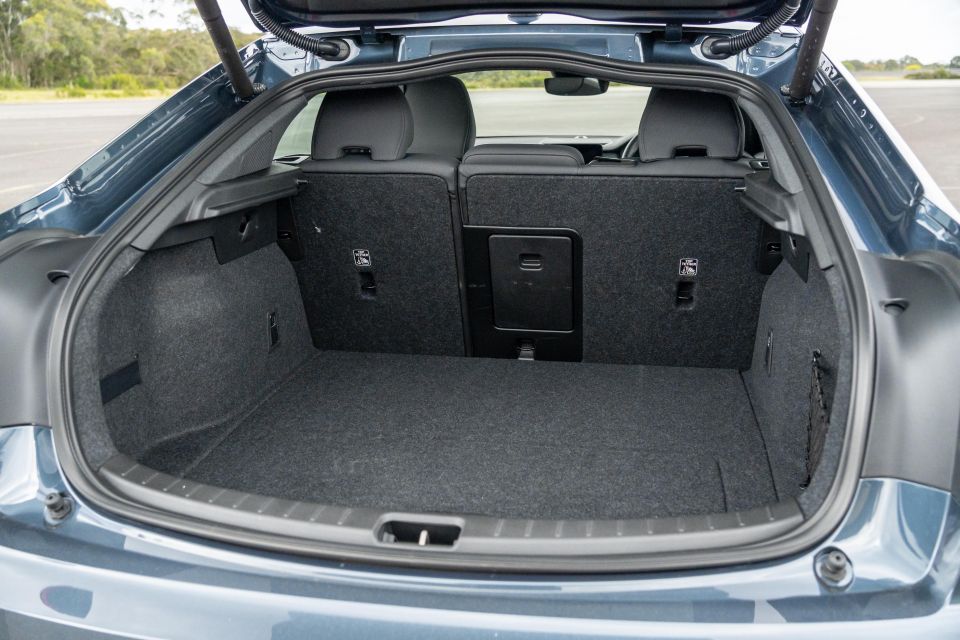
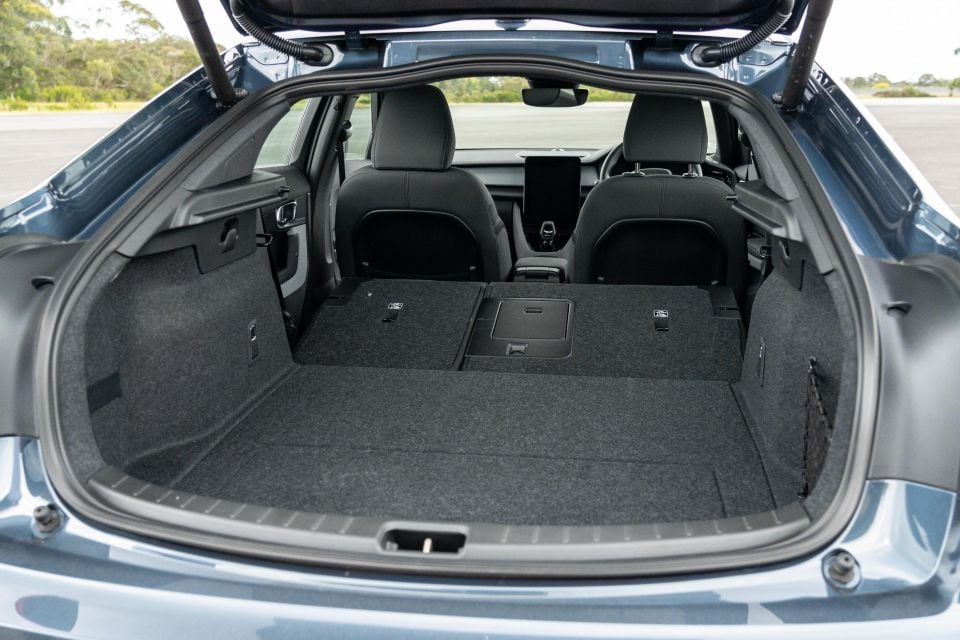
A Model 3 is more accomodating in the rear, thanks in no small part to its longer body and wheelbase.
Space beneath the powered hatchback is decent, although it’s not standout. The load bay is flat and broad, and there’s a decent cubby beneath it for charge cables or valuables. You only get 30L of space under the bonnet, which is another nod to its internal-combustion origins.
The rear seats fold 60/40, and there’s a ski port in the middle for longer items. Boot space with the seats in place is 405 litres. There’s no spare wheel, just a puncture repair kit under the bonnet.
Power in the Long Range Single Motor comes from a 78kWh battery pack, mated to a motor on the front axle making 170kW and 330Nm. The 100km/h sprint takes a claimed 7.4 seconds.
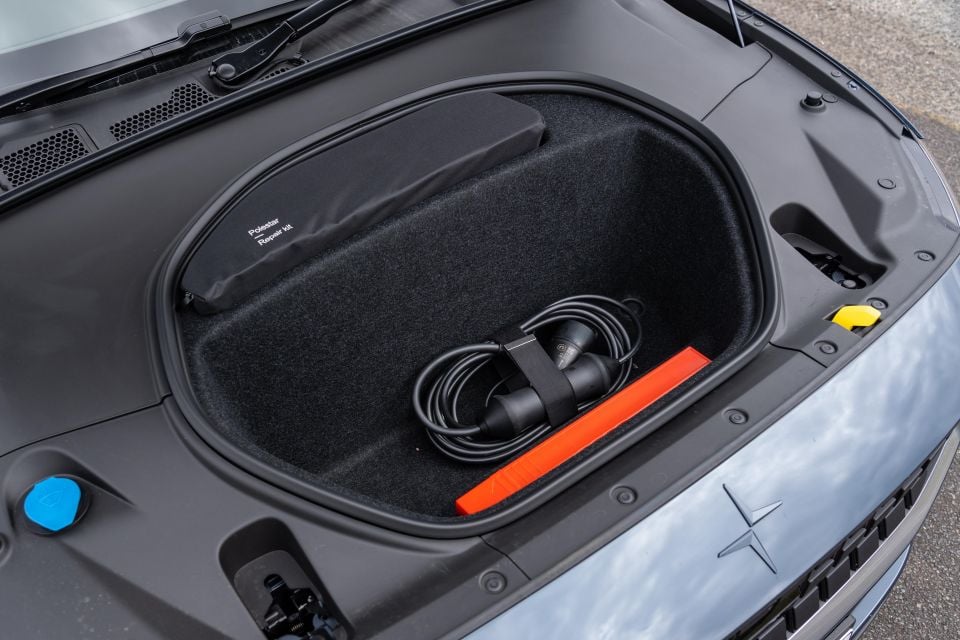
The Polestar 2 has energy consumption of 17kWh/100km in the single-motor variant on test here, and a claimed range up to 540km.
Polestar has confirmed the 2 will be making the switch to rear-wheel drive, but those models (which also feature a slightly different design, and some equipment changes) won’t start arriving in Down Under until the third quarter of 2023.
Polestar says you can charge at up to 150kW on a public DC fast charger, good for a 10-80 per cent boost in 35 minutes. It’s worth noting, that peak charge speed is only available up until around 20 per cent, before it gradually tapers off.
According to EV Database, it’ll maintain around 130kW between 20 and 40 per cent, dropping to around 100kW between 40 and 55 per cent, and then tapering to around 70kW between 55 and 80 per cent.
You don’t turn a key or press a start button to get the Polestar 2 rolling, you just sit down and select drive with the key (or a smartphone running the Polestar app) in your pocket.
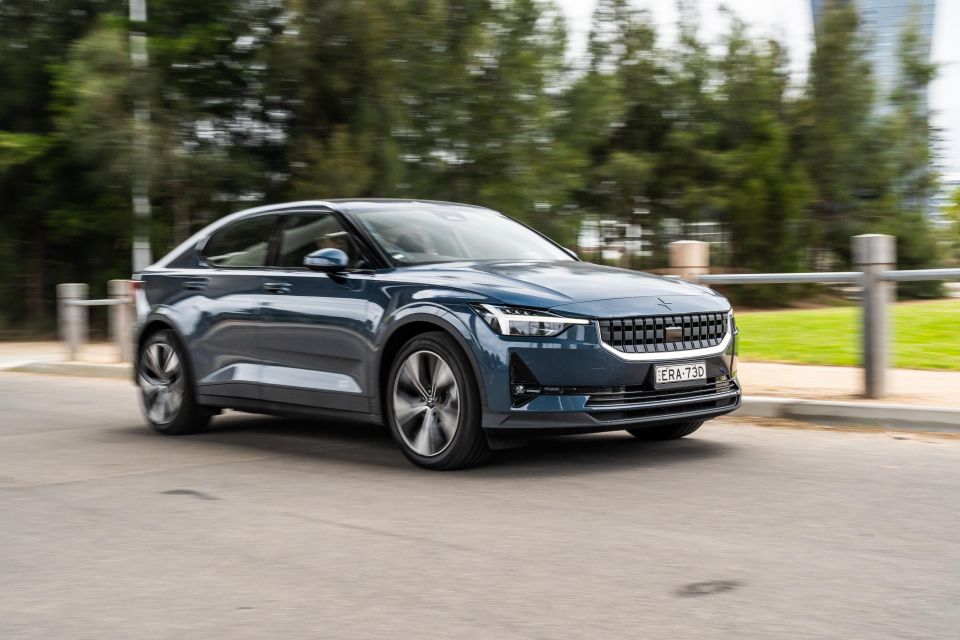
Unlike the Long Range Dual Motor, not to mention a few of its rivals, the Long Range Single Motor doesn’t have a 100km/h sprint claim that’ll blow your mind. In the real world it’s still hot hatch quick, with enough grunt on tap to get the front wheels spinning when you mat the throttle in the wet.
There’s even a hint of torque steer to watch out for, although that will only be the case until the rear-wheel drive PS2 touches down locally in the third quarter of 2023.
With no gears to worry about, and no revs required to unlock peak torque, it’s simple to shoot into gaps in traffic at short notice below about 80km/h.
The right-hand pedal is quite heavy, and has a long travel that makes it easy to mete out exactly the right amount of torque at low speed. There’s no excuse for jerky, lumpy city driving in the Polestar 2, because the throttle is beautifully calibrated.
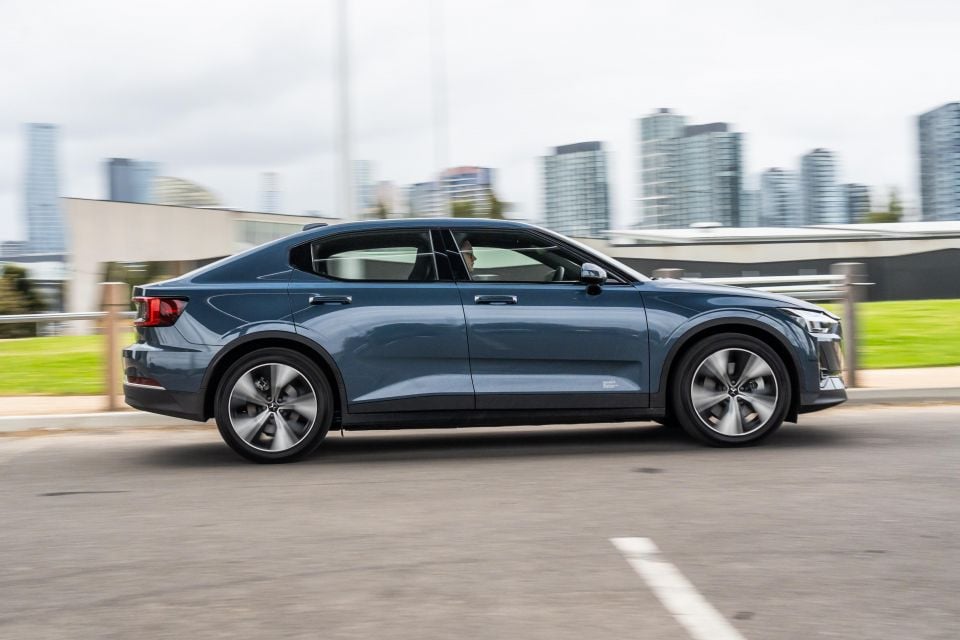
Likewise the regenerative braking, which feels every bit as smooth and sophisticated as that of the Tesla Model 3. There are three modes (off, reduced, standard) but the default setup is perfect, allowing for one-pedal driving after a brief acclimatisation period.
Even with regenerative braking switched off the left-hand pedal doesn’t have the same wooden, dead feeling you get in some electric cars. Realistically though, we expect most owners will just leave the system switched on.
Ride quality is pretty good, but it’s clear Polestar is chasing a sporty feeling with how it’s set up the 2. It does a good job keeping the worst of the city out, isolating occupants from potholes and expansion joints, but there’s a sense of purpose to the ride even in non-performance oriented models.
Of course, that pay dividends in the corners. Body control is excellent over dips and crests, where the 2 doesn’t exhibit the same springy, floaty feeling you get in some rivals.
Electric cars are heavy, and keeping all that mass in check without ruining the ride is tricky. Polestar has managed.
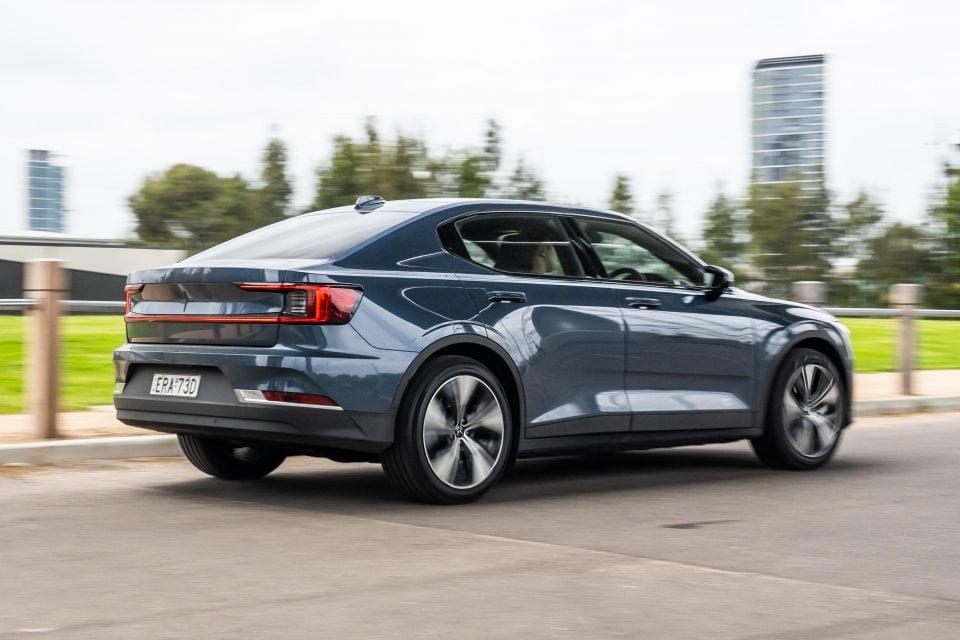
There’s no getting away from the fact it’s a small-ish car that weighs around 2000kg, and the fluid, direct steering offers no sense of connection to the road, but once dialled into what’s required you can point and squirt the Polestar 2 pretty effectively on interesting roads.
When you’re in less of a hurry, the Polestar 2 is a refined cruiser. The motors are smooth and silent at low speeds, and there’s no wind or road noise at city speeds. I love a noisy engine, and I love a manual transmission… but every time I commute in an electric car the benefits of smooth, silent one-pedal driving are reinforced.
As is common in European (and electric) cars there’s a bit of tyre roar on coarse-chip highways, although it’s nothing that can’t be solved by turning up the stereo. The Polestar 2 is quieter than similarly-priced Mercedes-Benz petrol crossovers, and comfortably puts the BMW 2 Series Gran Coupe in the shade for highway refinement.
The benefit of Polestar’s link to Volvo is clear when you activate the adaptive cruise control and steering assist. It’s one of the smoothest, smartest radar cruise control systems out there, and the active steering does a great job keeping you between the white lines.
All Polestar 2 models come standard with the following equipment:
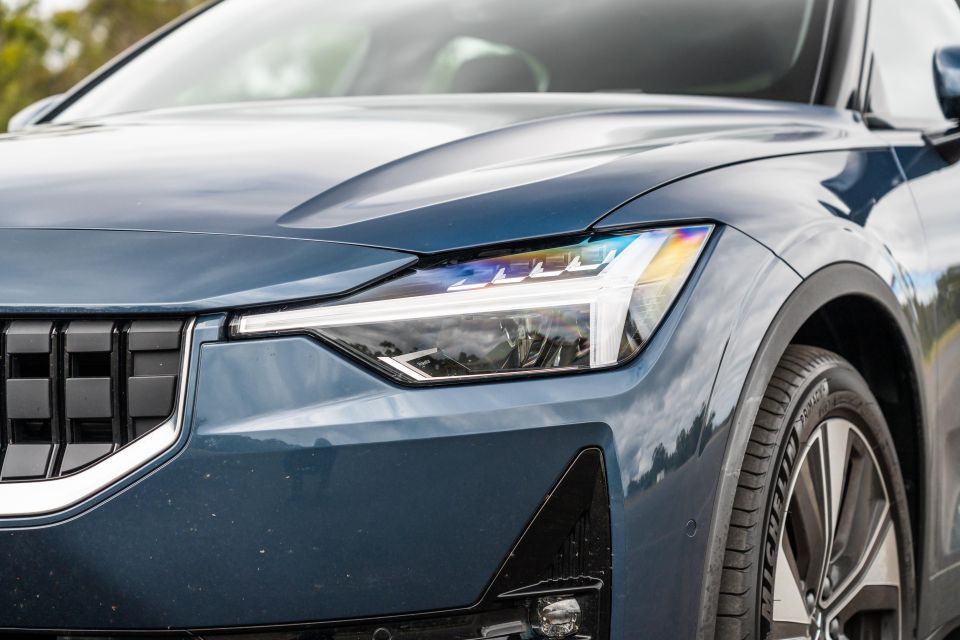
Where expert car reviews meet expert car buying – CarExpert gives you trusted advice, personalised service and real savings on your next new car.
Pilot Lite Pack ($3400) adds:
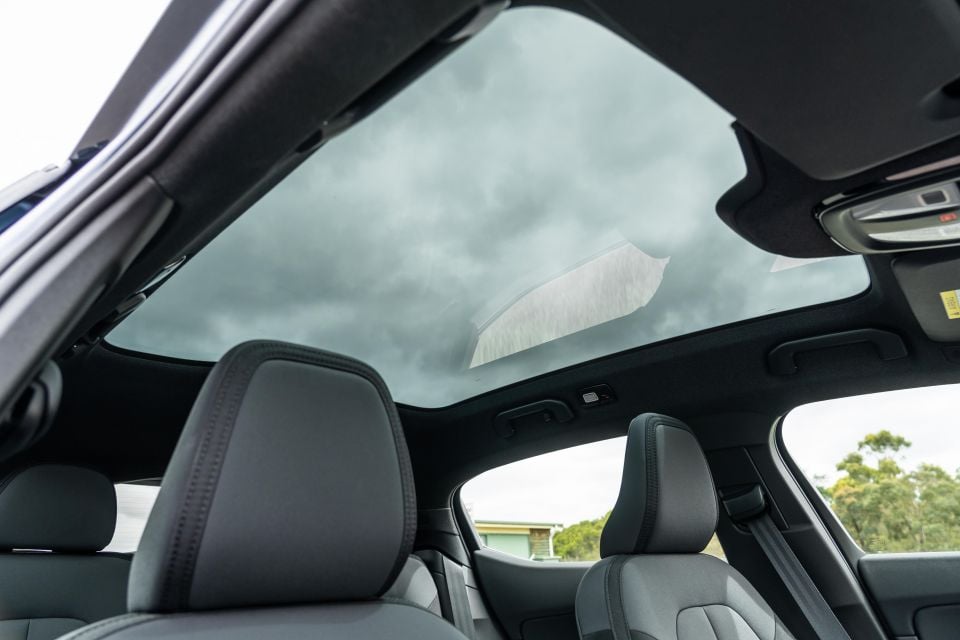
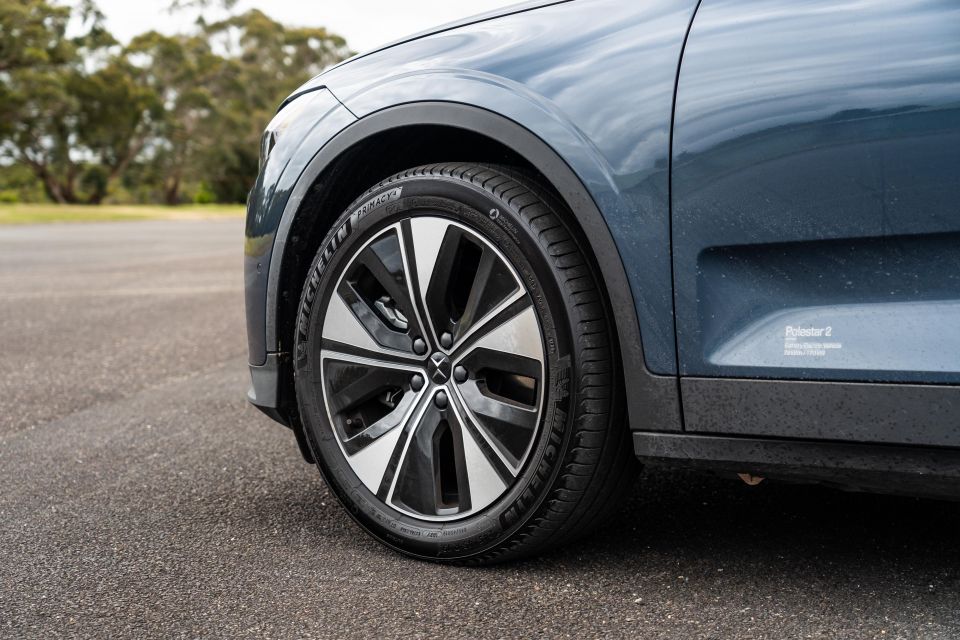
Plus Pack ($6000) adds:
Performance Pack ($8000, LR Dual Motor only) adds:
The Polestar 2 has a five-star ANCAP safety rating with 2021 date stamp.
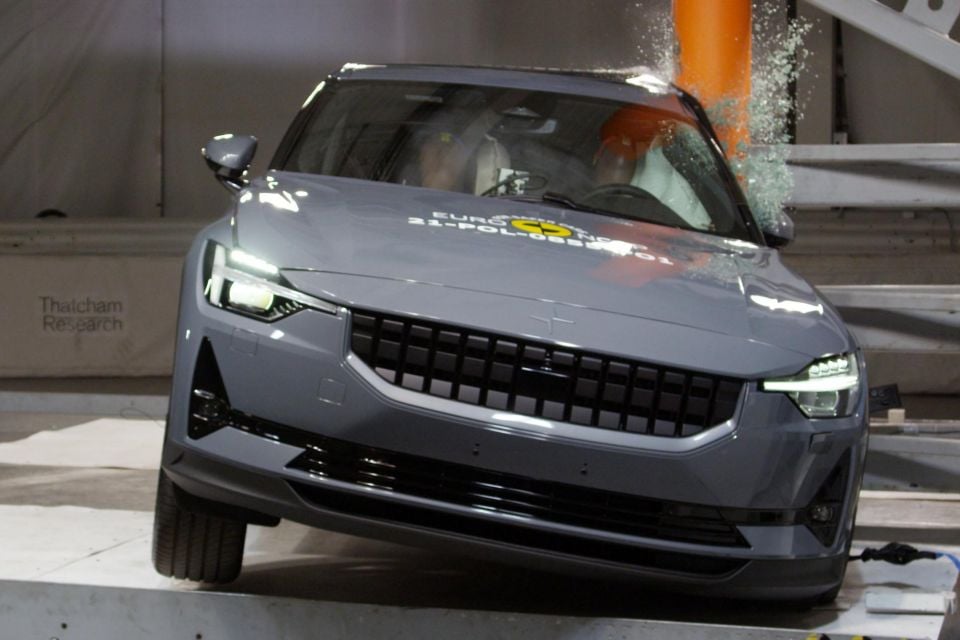
It received an adult occupant protection score of 93 per cent, a child occupant protection score of 89 per cent, a vulnerable road user protection score of 80 per cent, and a safety assist score of 86 per cent.
Standard safety equipment includes:
The Polestar 2 is covered by a five-year, unlimited-kilometre warranty with an eight-year, 160,000km battery warranty.
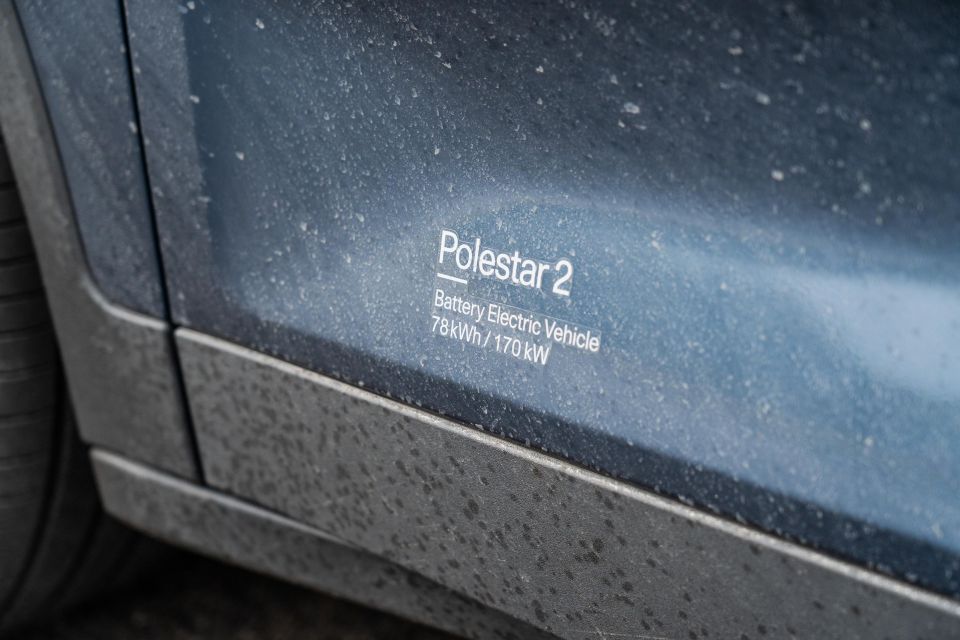
All models come with free servicing and roadside assistance for five years.
Unlike most rival premium brands, however, Polestar doesn’t throw in a complimentary subscription to the Chargefox public charger network, nor does it seem to offer a home charger installation solution.
Buy your new car without the stress. It's fast, simple and completely free.

Great service from Travis and team, second time I have used this business would not hesitate to recommend them to anyone
Craig C.
Purchased a Ford Ranger in Sunshine Coast, QLD
CarExpert helped Craig save $7,224 on his Ford Ranger, now let us save you on your next new car.
Get your BEST priceThe Polestar 2 remains a compelling alternative to the strong-selling Tesla Model 3, especially if you crave a slightly more conventional experience.
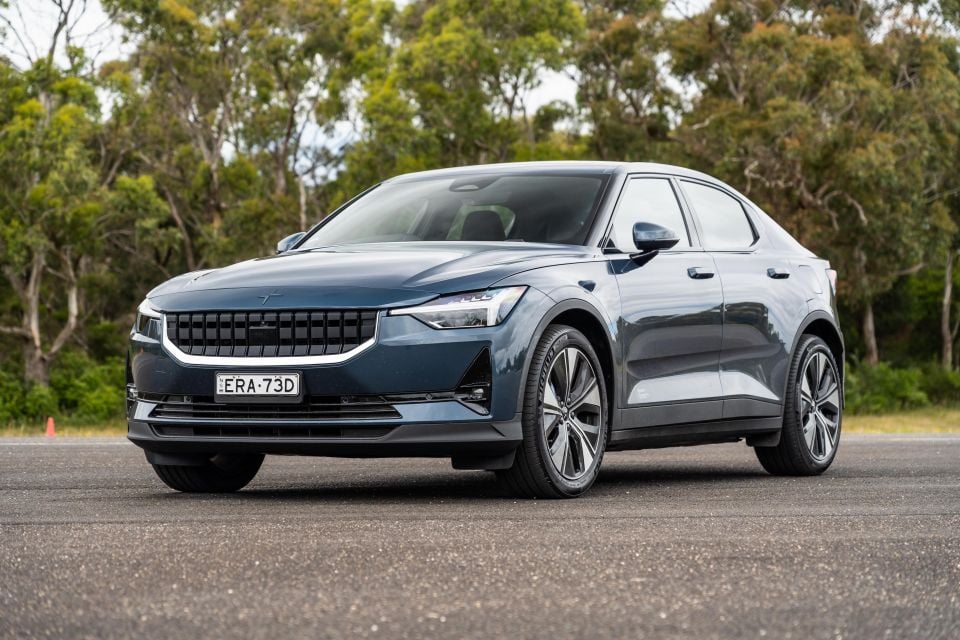
It’s fun to drive, handsome to look at, and comes with one of the best infotainment systems on offer for the price, and the cool factor that comes with the Polestar brand is undeniable.
But the fact you need to pay for a full suite of active driver assists as part of options packages is hard to defend, given the 2 is meant to be from a technology-forward brand with a reputation linked to safety-focused Volvo. Adding packs also undermines the value equation.
While we’re complaining, the interior and boot are tighter than you might expect, and knowing the front-wheel drive car is being replaced with a rear-drive version later this year will make some people want to wait.
Even with all of that considered, the Polestar is a strong entrant in Australia’s fast-growing electric vehicle space. It’s not hard to see why Polestar is selling every car it can get.
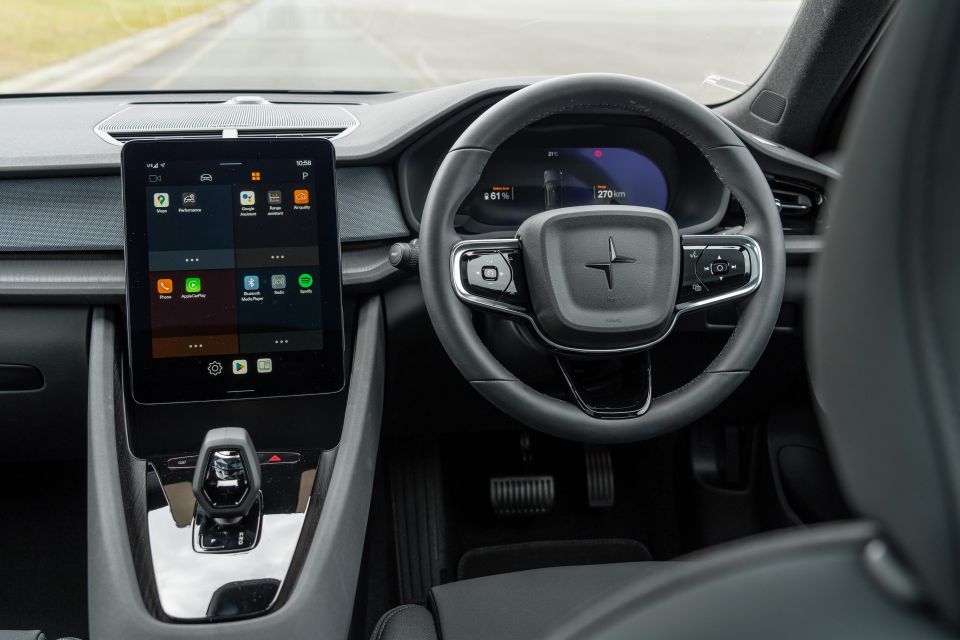
Click the images for the full gallery
MORE: Everything Polestar 2
Where expert car reviews meet expert car buying – CarExpert gives you trusted advice, personalised service and real savings on your next new car.
Scott Collie is an automotive journalist based in Melbourne, Australia. Scott studied journalism at RMIT University and, after a lifelong obsession with everything automotive, started covering the car industry shortly afterwards. He has a passion for travel, and is an avid Melbourne Demons supporter.


Neil Briscoe
4 Days Ago
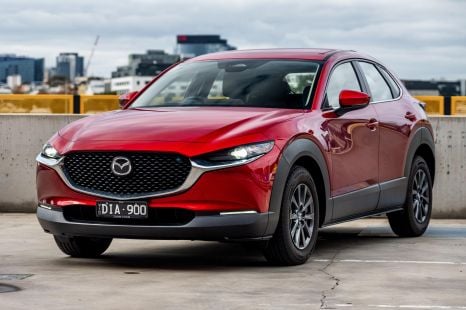

Max Davies
3 Days Ago
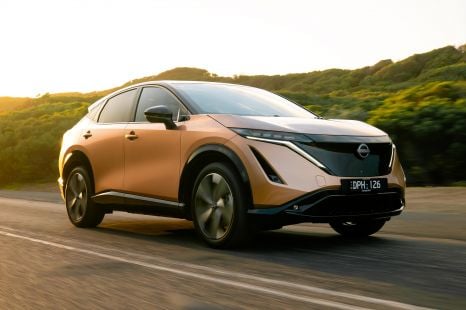

James Wong
2 Days Ago
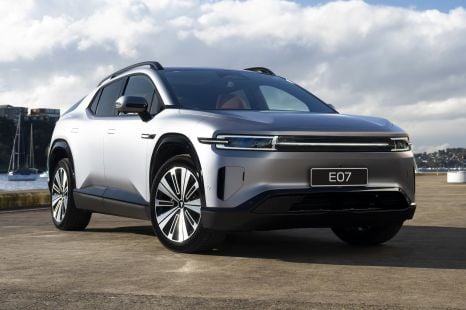

William Stopford
2 Days Ago
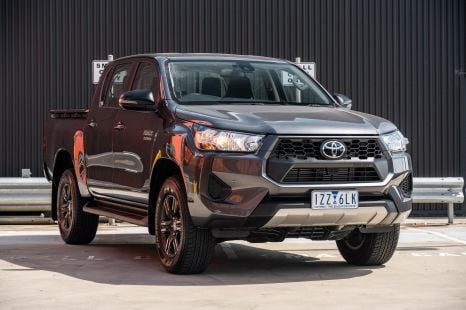

Josh Nevett
22 Hours Ago


James Wong
19 Hours Ago